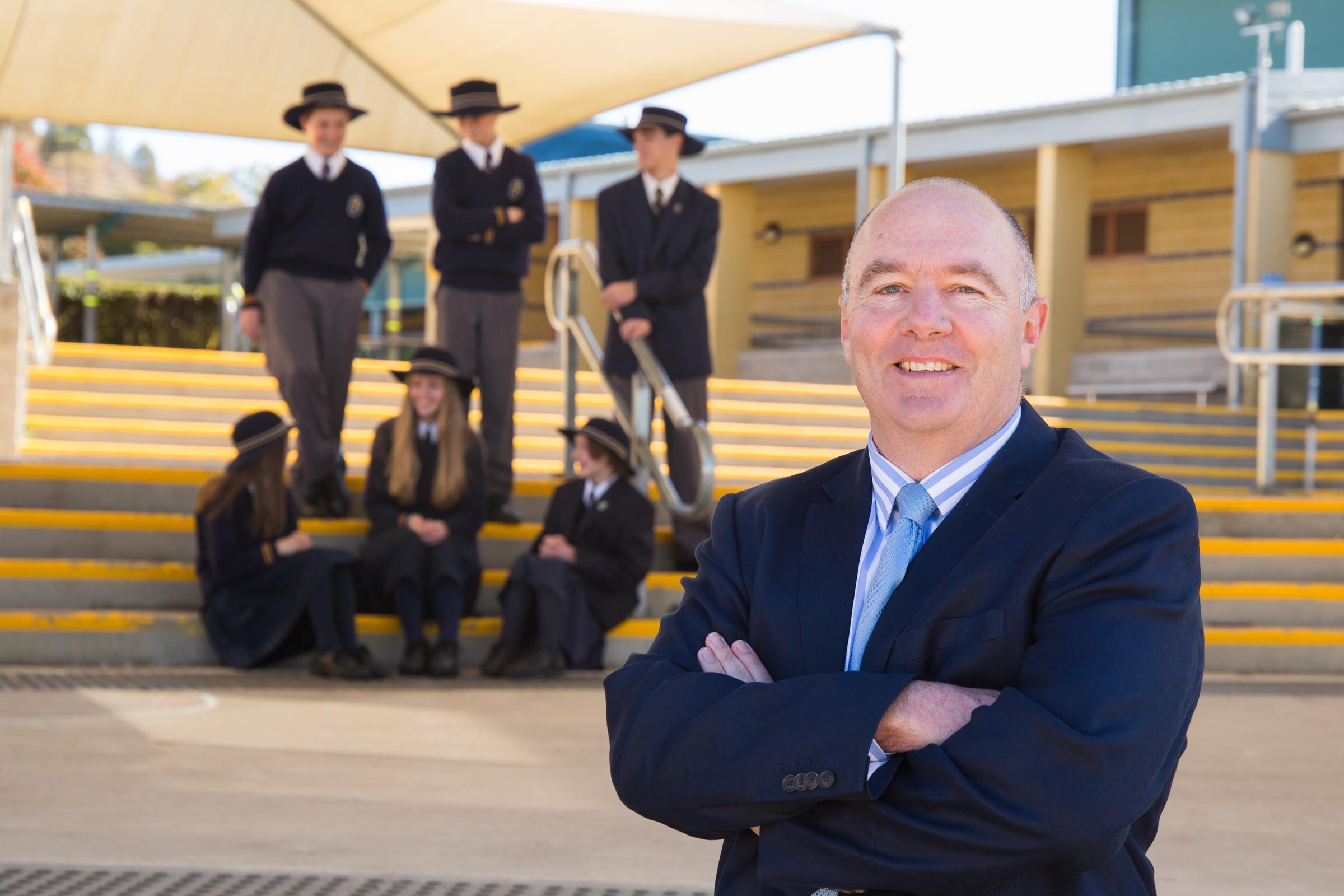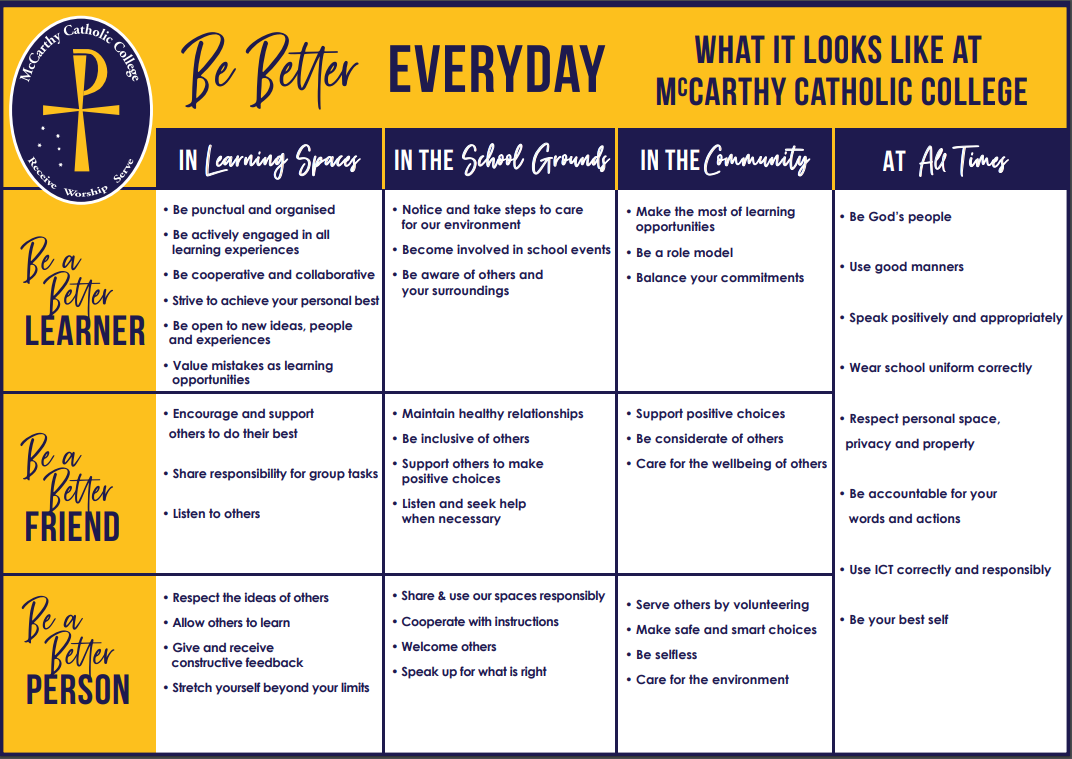
Assistant Principal - Pastoral Care
Learning Positive Behaviours for Learning
In Term 4 last year I wrote about the concept of restorative communities.
“Restorative communities are dedicated to reaffirming human good and redefining what it means to be human. In a Catholic school, the well-spring for our hope comes from our Christian faith and heritage.
Restorative communities provide individuals with the opportunity to explore how to live life well. Our community is inspired by the life of Jesus which urges us to live in right relationship with God and with our fellow human beings. When we enable our lives to be shaped by the narrative of Jesus, social transformation occurs. People begin to respond to the needs of others rather than focusing on self-centredness.”
One of the cornerstones of creating such a restorative community is how we form relationships within the College and he we deal with each other when conflict or transgressions inevitably occur. This year we are launching a new Student Behaviour Support policy that has a focus on understanding behaviours rather than simply reacting to them. It places emphasis on relationships, personal responsibility and choice. It is proactive and preventative in nature and strives to create a positive learning, personal and interpersonal culture in the College. It provides opportunities for restoring trust and rebuilding relationships as well as redirection for students to allow for new beginnings.
First and foremost, we are adopting a Positive Behaviour for Learning (PB4L) approach across the College. PB4L has a focus on learning, capability building, wise and thorough use of data, and identifying and spreading good evidence-based practice. We are being highly explicit and consistent about the behaviours that students require to be successful learners. Teaches recognise that we are not only responsible for delivering academic content but also developing the young men and women in our care emotionally and socially.
Behaviour is the physical actions of the agent. Behaviour flows from character, intention and circumstances. As a College, we aim to influence student character and attitudes in order to help students to flourish as learners and individuals and members of their communities.
The aims of Positive Behaviour for Learning are:
- Promote positive relationships that exemplify the ethos of school
- Promote social inclusion and equality
- Proactive approach to behaviour management, rather than reactive regulation
- Restorative Practice as first response to behaviour issues (our first day of the year involved training in this area with an expert presenter from Sydney)
- Restorative Practice as explicit and consistent framework for promoting positive relationships
- Expectations and consequences clearly stated
- Procedures model desired behaviours and outcomes
- Mechanism for regular review and monitoring of effectiveness
Introducing, modeling and reinforcing positive social behaviour is an important step of a student’s educational experience. Explicitly teaching our behavioural expectations and acknowledging students for demonstrating them is key to our success. This is because:
- They are necessary skills for success in life
- Some students arrive at school without these important skills
- They are the basis for a positive and safe climate
- Doing so increases opportunities to teach other skills.
When can students expect to be taught the positive behaviours for learning?
- At the beginning of the school year
- Often enough to achieve and maintain fluency
- Before times when problem behaviours tend to increase
- Ongoing throughout the year (refresher lessons)
- At teachable moments.
How will we teach the positive behaviours for learning?
Tell – Introduce the expected behaviours and discuss why it is important
Show – Demonstrate and model
Practice – Role play expected behaviours in the relevant contexts
Monitor – Pre correct, supervise and provide positive feedback
Reteach – Practice throughout the day.
Where will we teach the expected behaviours?
- In every classroom throughout the school
- Everywhere in the school
- It is embedded in other school activities such as our sport teams, Year and Whole School Assemblies, excursions.
In creating a Positive Behaviour for Learning culture, one of the steps is to co-construct a Behaviour Expectations Matrix with students and staff. Last year this took place during Term 4 between the student representatives from each mentor class elected by the students (50 plus students in total) and a working party of volunteer staff. The students and teachers individually drafted and refined their work over a number of meetings. Eventually the work of both parties was merged and then refined by each other until we came up with an agreed set of expectations. Giving student voice to the process is essential and the students were responsible, constructive and thoughtful in their contribution and clearly reflects their desire to be a part of a restorative community as were the teachers who became involved.
Parents will play a critical role in supporting the acquisition of positive behaviours for learning by reading and discussing the Behaviour Expectations Matrix (link below) with their sons and daughters. Particularly discuss any that you or they feel they may struggle with and then practice at home or seek help from their Leader of Student Care who can provide support. It is only when home and school work in tandem that we are able to give our students the opportunity to be better learners, better friends and better people.
Mr Mick Larkin - Assistant Principal - Pastoral Care



